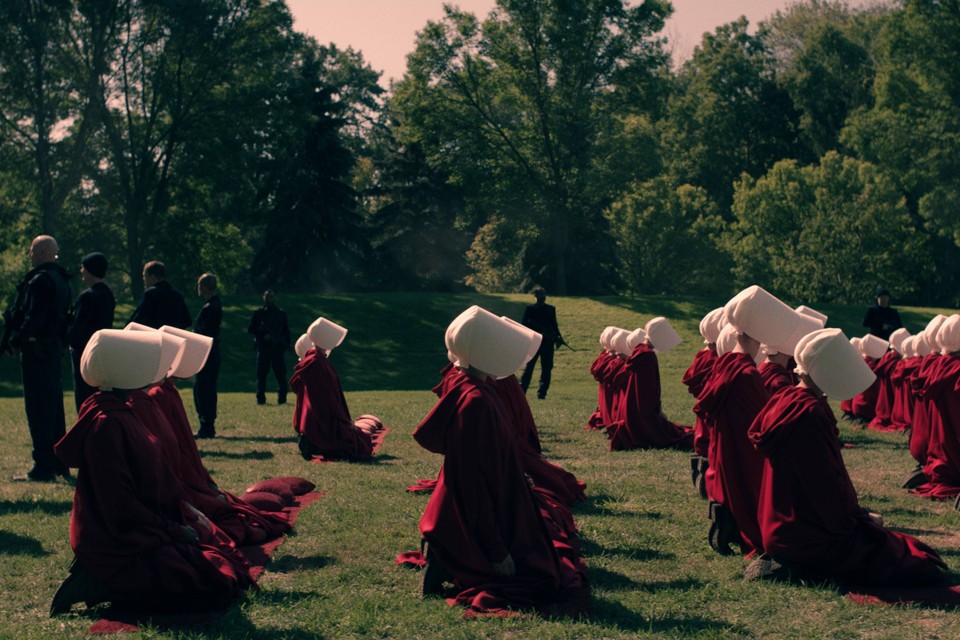To be vulnerable is to be able to be completely, fearlessly honest and to open your heart up to people. When doing so, you’re heard, understood, and respected. When it comes to this topic of vulnerability, most of us will quickly agree that being vulnerable can be quite scary, and we may find it difficult to get ourselves to that place. Some may also feel that the likelihood people taking advantage or losing connections with others is high. However, in order to grow personally or with someone else, vulnerability is the difference between those two. Taken for granted unknowingly, most people struggle and are uncomfortable with being able to open themselves up and may not reap the benefits of such. Relationships are important to have and are usually set up for success when vulnerability is a factor.
Being vulnerable is something everyone should practice in their lives; however, there is concern whether being vulnerable too soon is a good idea or not. For example, let’s say you’re on a first date. You decide to pop a question that may seem general, “Do you have any goals in life?”. Whoever is sitting across from you believes vulnerability is necessary at the start of every relationship in hopes of ongoing honesty.
So they answer without hesitation, “Why yes, my goal is to build a family. I’d like to find my soul mate soon because, quite frankly, I feel my biological clock is ticking; it is time for me to settle down!” For most people, responding with an awkward laugh or a scratch on the head might be ideal. Hearing such an open and honest response on a first date could scare your potential significant other away. In a 2014 blog post written by Cadence Turpin, freelance writer and co-founder of Common Table, “Why Being Vulnerable is Leaving You Lonely”, she argues that being upfront and honest to just anyone is not how vulnerability should be executed. Turpin claims, “We all have known moments where it would have been nice to hit a big red “TMI” button…and suddenly watch the person across from you snap to their senses and return to an appropriate level of emotional exposure.” Turpin’s point is that when someone has expressed personal information very soon, it makes the person on the opposite end uncomfortable. There was a time when a coworker of mine asked, “Hey Reyna, how are you?” I then replied with the generic response, “Good! How are you?” I received quite the unexpected confession, “Not good at all. My wife and I are going to get a divorce.” To my reply, “Oh, man. I-I’m so sorry to hear that, Jake…” What do I say to something like that? I was not prepared to become a marriage counselor to this man I had only known for a month or two.
Turpin believes there are steps that should be taken before opening up takes place. Turpin insists that, “Know not every person is meant to listen to and speak into your wounds” (Turpin). In other words, when you barely know someone, telling them your truths, whether they come from a place of pain or happiness, you shouldn’t expect a reciprocated response. When a relationship is already established it is likely that honesty and vulnerability comes from both sides. However, in order to obtain trust in friendships or intimate relationships, you must build it first. Turpin also informs that once the trust is there, then it is safe and appropriate to share yourself (Turpin). When my boyfriend and I first started dating, I refused to open up and share a wound of mine that could potentially tarnish his view of my father. I refused because we had not known each other long enough, and he hadn’t met my father; there was not a need for it. I did not want my boyfriend to judge him before he even met him. One day he confided in me that his cousin was making some pretty bad choices in life. He mentioned that his cousin became addicted to drugs and how it was hurting him to see his cousin in such a bad place. At this time my boyfriend and I had already been together for one year, so we had already established trust in our relationship. I felt that because he opened up about his feelings towards his cousins downward spiral, I decided to share how drugs effected my father in the past. Had I mentioned this story week one of our relationship, he may have never gotten to see my father for the great man he truly is. Ultimately, our exchange brought us closer. We were able to be vulnerable at that moment. Though attempting vulnerability does seem scary, it is rewarding in relationships that have had the time to build trust.
Within friendships or intimate relationships time is required to ease into vulnerability. On the other hand, when it comes to a relationship between teachers and students, being vulnerable right off the bat may benefit the success of the class all together. In January of 2016, author and teacher, Wendy Miyake illustrates how she chose to be vulnerable to her high school students. In the article, “How Vulnerability Can Expand Your World”, Miyake tells the story of how she took on a job opportunity to teach English literature at a high school. Miyake describes her job to be intimidating due to the fact that she will be in the midst of teenagers (Miyake). In order to hide her intimidation, she decided that she put up a wall to hide her fear. Miyake believes that when we expose who we truly are, it can be rejected or disliked. When this happens, installing that wall becomes a protective barrier so that we are safe and won’t be broken down (Miyake). Though Miyake isn’t the only one to feel this way, she soon realized how that wall needed to be torn down. Her students had completed a senior’s honors project that would have been presented to the school and a university. When they were informed that it would not happen, her students were outraged due to all the hard work they had put into it. Her students expressed their anger and disappointment. It was at that moment Miyake decided to express her true feelings as well. For the first time she removed the wall and opened up; she became vulnerable. At the end of the school year, many of those same students sent her letters to show their appreciation of how much she supported them during that upsetting time. As time went by, Miyake has learned how vulnerability works for her. Miyake observed, “The rewards of vulnerability are immeasurable…When I have chosen to be open, to show my authentic self, my students have met me there. And when they’ve met me there and formed that connection, there’s nothing they can’t accomplish.” According to Miyake, vulnerability was something she was uncomfortable with. She viewed vulnerability as a burden; however, she was pleased with the end result.
Thinking back to my experience with teachers, I can point out the ones who I feel may have been more vulnerable than the others. A classroom full of students that show no effort or respect for the subject and curriculum does not only say something about the students. I feel that those classrooms are lacking vulnerable teachers. When there is classroom that consists of invested students, give or take the few who don’t give effort in general, it seems as though their teacher has been vulnerable at one point or another. Miyake includes another conclusion, “Vulnerability is so much easier when you love yourself”. Behind vulnerability there is confidence. I feel that the teachers who let go of their students, allow them to disrespect the precious value and credibility the teacher has in the field shows how little the teacher sees value in themselves. A confident teacher is honest and open to express themselves and how they expect their students to perform academically. If students are aware of the expectations of their teacher, the students reciprocate the vulnerability and their work environment will be successful.
Miyake choosing vulnerability for the success of her students was a good idea, and she may always choose to be a “vulnerable teacher”. Whether she chooses vulnerability outside of the classroom may be a different story. As humans we are wired to protect ourselves. So it is natural that once we are hurt, that we prevent the same thing from happening again. Published in 1976, authors Victor Daniels and Laurence J. Horowitz co-wrote their book titled, Being and Caring. The book explains the many reasons why we are the way we are, and provide helpful skills to ensure a better quality life. A lot of why we are the way we are is due to experiences that are of our own and others. With these experiences people start to turn on and off vulnerability. In chapter two, titled “Opening and Closing”, the authors explain “There are times when I need to be closed and times when I need to be open”(Daniel,Horowitz 68) I agree with the claim the authors make up to a point, but I cannot accept their overall conclusion that this applies to every situation. For example, let’s say you had a heart-to-heart with a close friend. You shared personal feelings about a situation. Then you come to find out that your friend has exposed your inner thoughts to others without your consent. Hopefully, this doesn’t mean that you will never have heart-to-hearts with a friend in the future. Being vulnerable is a risky trait. The book teaches skills to improve your life, however I feel that these skills on vulnerability emphasize a lot on defensiveness. The truth is, not everyone is out to get you. To be fair, the book does express how being open can bring joy. Daniels and Horowitz claim, “When I don’t have to protect myself, I’d rather be open. I feel better physically when I’m open. I learn more. I contact other people more easily. I feel more alive”(Daniels,Horowitz 68) When you walk around with a wall, you’re hiding who you are. Your thoughts are censored because of the fear of judgment. At least you know that when you are honest, you are doing all you could do in any situation. You may even sleep better at night when you are completely choosing to be vulnerable.
Oftentimes people view being vulnerable as a sign of weakness; you’ve given up your power and strength. What people are doing, is putting up a wall. That wall is what divides you from people around you. This wall not only prevents someone from knowing who you really are, but it prevents you from knowing who you really are. In a 2010 TED Talk video, “The Power of Vulnerability,” Research Professor Brené Brown enlightens listeners on how being vulnerable can enrich our lives. She spent ten years of discovery on why vulnerability is hard for people to obtain within their lives, as well as her own. Brown informs, that we are not experiencing vulnerability because of our inability to own up to our own actions. Brown states, “We pretend that what we do does not have an effect on people… we do that in our personal lives…we pretend like what we’re doing doesn’t have an impact on people…we just need you to be authentic and real and say ‘were sorry; we’ll fix it.’” Brown explains how we can be so set in our ways of numbing, that when people are affected by it, we can’t own up to it. We can’t own up to our actions because we do not want to come to terms that we aren’t perfect. Coming to terms with how it affects people forces confronting the feelings we have deep inside us. If we were to identify those feelings and were open about them, then the door for improvement has opened.
Browns research reveals the sad truth of why we can’t experience vulnerability even further. Her research proves that when we numb negative emotion, we numb positive emotion as well. She informs, “We numb vulnerability…we are the most in debt, obese, addicted, and medicated adult cohort in US history…you cannot selectively numb emotion.” As soon as one starts to feel emotions, whether its joy, sadness or anger, they become fearful or ashamed. Brown believes that those who have that wall preventing vulnerability are numbing themselves the minute they start to feel any kind of emotion. According to Brown, people of the US use alcohol, food, or shopping to numb. We choose to numb to distract ourselves from the truth because it feels safe. How do I numb to distract? I turn to the little electronic device that sits pretty on my lap, awaiting to be my escape. I can recall myself getting to a place where exposing my true self is about to happen, but then I start to feel uncomfortable. I feel uncomfortable because showing someone who I really am can be kind of scary. So the wall stands up, and I’m back to what I want people to see. Brown also believes that shame and fear go hand-in hand when it comes to disconnection (Brown). In my case, I couldn’t agree more. I put the walls up because yes, I am afraid. I’m afraid that if I show all of me, I would either be rejected or unappreciated, and those feelings would disconnect me from people.
Now putting up those walls could only work for so long until you realize what you may be missing out on. Some feel that the wall is a wall of protection. The wall will not allow people to pick something about you to critique. A wall that stands firm, shows how strong one is, and how withstanding anything comes naturally. Well, at some point it becomes exhausting and unrealistic. Kovie Biakolo, a Senior Writer and Cultural Advocate at Thought Catalog, expressed in her 2013 article titled, “What Happens When You Make Yourself Vulnerable,” about how she started viewing vulnerability as a strength rather than a weakness, and how that wall was not as helpful. Before bowing down to vulnerability, Biakolo built a wall that she believed showcases her strength. She up-kept this strong and put together persona in order to protect herself from pain. Although she liked to say this was her strength, Biakolo also claims, “And in my attempt not to be vulnerable, I have ultimately been motivated by fear.” The truth is, we are fearful of being hurt or rejected. That’s it. Fear alone prohibits the happiness that could possibly come from vulnerability. As Biakolo realized how she had overlooked the benefits that come with vulnerability she expresses her thought moving forward. Biakolo admits, “Vulnerability won’t be easy…I might get damaged and broken like so many others. But I’m not sure this unspoiled heart of mine is any better off.” Biakolo was so set in her ways of not showing who she really is. She guarded herself so-much-so that it even prevented her from feeling hurt; it prevented her from a “spoiled” heart. Furthermore, if she practices vulnerability and the result is rejection, at least now she knows the truth and can utilize that as progression. Biakolo decision to deny vulnerability was limiting herself from experiencing truth and love. She realized that in order to reach fulfillment, she needs to risk her heart being hurt; she needs to be willing to show who Kovie Biakolo truly is behind that wall.
Opening up for Biakolo was a decision she made in hopes of letting people in; furthermore, there are many people who bravely decide to do the same. Grammy award-winning musician, Beyoncé released a song in 2009 named “Halo”. The song tells a love story of a woman who lets down the walls that stood between her and her significant other. Beyoncé sings, “Remember those walls I built?/Well, baby they’re tumbling down/And they didn’t even/put up a fight/They didn’t even make a sound/I found a way to let you in/But, I never really had a doubt/Standing in the light of your halo/I got my angel now.” She uses great imagery to illustrate how there were walls that separated her from her lover, and she has finally removed them and can experience love to the fullest. Beyoncé continues, “It’s the risk that I’m taking/I ain’t never gonna shut you out!” Tearing down the walls that may feel like protection feels risky, but she shows willingness in order to love wholeheartedly. This song beautifully portrays that there is a rewarding result when being vulnerable.
After knowing that there are benefits vulnerability has to offer, it remains without question that this is definitely a difficult trait to implement. Being vulnerable is an act of bravery, confidence, and emotional awareness. Whether you expose your true self in hopes of understanding or reciprocate the gift of vulnerability when it’s exposed by someone else, know that vulnerability is not for the weak. Ultimately, expressing yourself is knowing that you are worthy of love and the truth.
Works Cited
BeyonceVEVO. “Beyoncé – Halo.” YouTube, YouTube, 3 Oct. 2009,
www.youtube.com/watch?v=bnvuhwcynig. Accessed 14 Nov. 2016.
Biakolo, Kovie. “What Happens When You Make Yourself Vulnerable.” Thought
Catalog, The Thought and Expression Co., 2 Apr. 2013, thoughtcatalog.com/kovie-biakolo/2013/04/vulnerability/.Accessed 14 Nov. 2016
Brown, Brene. “The Power of Vulnerability.” TED, June 2010,
www.ted.com/talks/brene_brown_on_vulnerability. Accessed 14 Nov. 2016.
Daniels, Victor, and Laurence J. Horowitz. Being and Caring. San Francisco, San
Francisco Book Co., 1976.
Miyake, Wendy. “How Being Vulnerable Can Expand Your World.” Tiny Buddha, Tiny
Buddha, 25 Jan. 2016, tinybuddha.com/blog/how-being-vulnerable-can-expand-your-
world/. Accessed 14 Nov. 2016.
Turpin, Candence. “Why Being Vulnerable Is Leaving You Lonely.” Storyline Blog,
storylineblog.com/2014/09/26/why-being-vulnerable-is-leaving-you-lonely/. Accessed 14 Nov. 2016.




